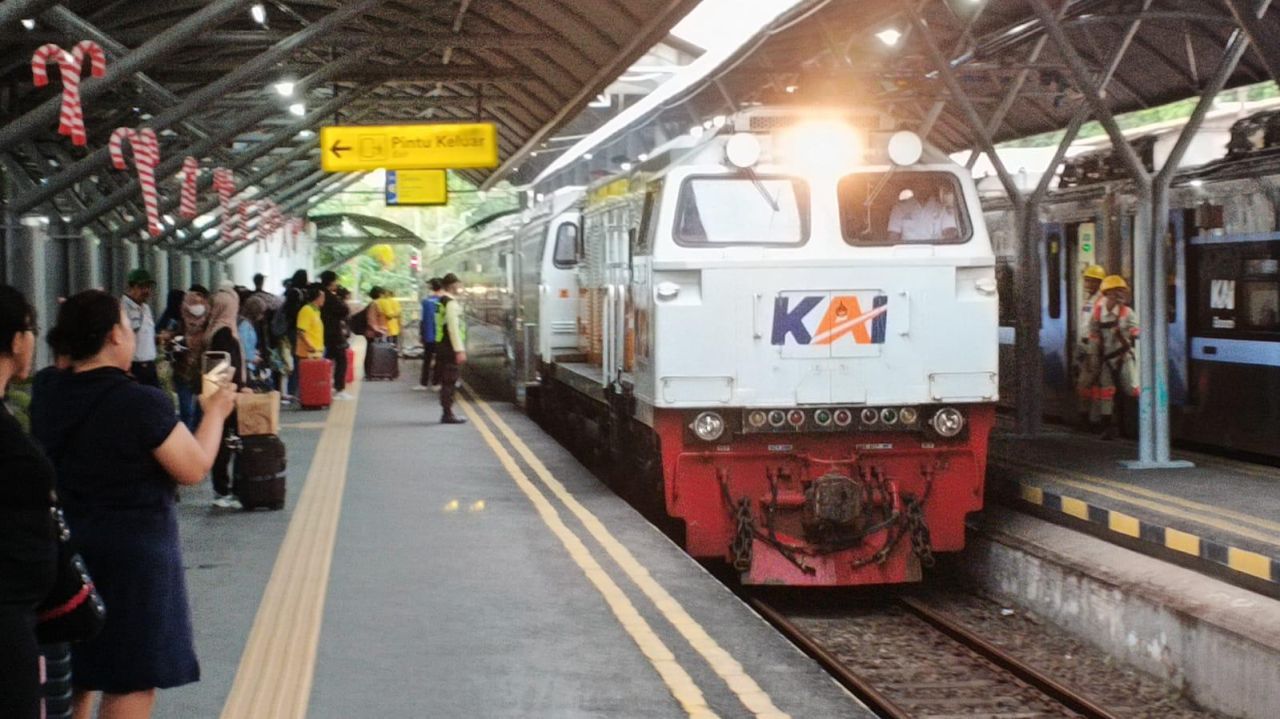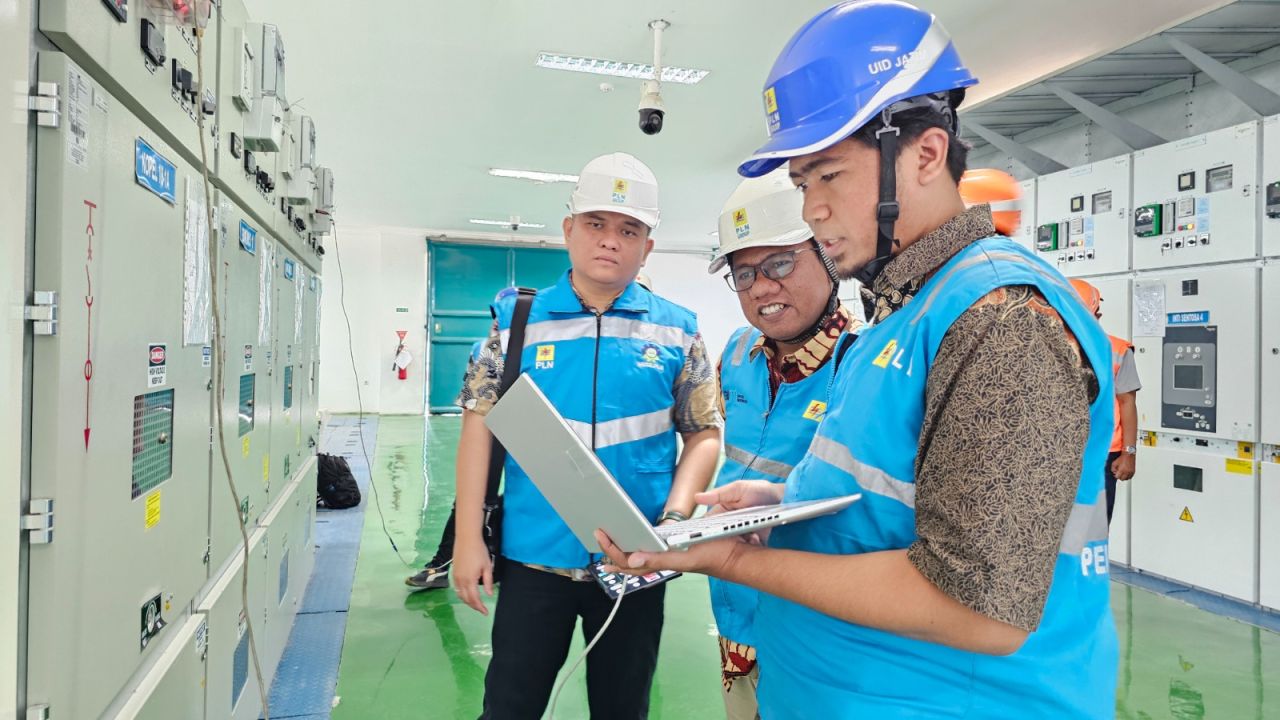- Doors and Seats
NA
- Engine
NA
- Engine Power
123.5kW, 390Nm
- Fuel
Diesel 7.7L/100KM
- Transmission
NA
- Warranty
NA
- Ancap Safety
NA
The electric LDV eDeliver 7 is already on sale in Australia, and roughly 12 months later, the diesel version joined the range on Australian streets. Trent Nikolic tests a commercial van that positions itself in a competitive segment but with a clear focus on value for money.
Likes
- Value for money
- Exceptional space and practicality
- Drives capably around town
Dislikes
- Cabin can get noisy at highway speed
- Some safety tech grates
- Cargo barrier would be good standard
Search cars for sale
Search Drive Marketplace
It's easy to forget that the van segment was largely an automotive afterthought until very recently. Despite the very nature of the segment itself – drivers spend long hours behind the wheel regardless of use case – features like active and passive safety, not to mention crash capability, were all virtually disregarded by manufacturers.
That's changed now, though, and more's the better. If you're the kind of buyer who needs to use your van for work, there's never been a better – or safer – time to buy. With that recognition has come renewed competition, and while Toyota's HiAce still dominates the segment in terms of volume, there's more choice than ever before. And perhaps most significantly, more value to be had than ever before as well.
As you may have read, we've already driven the electric version of this van, and now, 12 months after that drive, comes a review of the internal combustion, diesel-powered model, with styling just as sharp and edgy as the alternative powertrain.
That's no bad thing either, given the segment can get pretty boring, pretty quickly when you survey the sea of slab-sided white boxes out in the traffic. LDV might have made a smart decision by bucking the trend and releasing the electric version first, but plenty of you have been asking about the diesel-powered alternative.
The Deliver 7 moves the game forward significantly from the decidedly old-tech G10+ van it replaces, with sharper styling, a higher-quality cabin and ergonomics, more space and more power. While the G10+ remained on sale at the time of testing, the Deliver 7 is the one to have, and by some margin.
We used to review the G10+ through the prism of value first and foremost, but this new Deliver 7 competes with the established players on a much more even playing field. If you're a commercial business owner looking to buy a van on a tight budget then read on, because there's a lot to like about the 2025 LDV Deliver 7.
How much does the LDV Deliver 7 cost in Australia?
Pricing is sharp for the Deliver 7 – significantly sharper than the eDeliver 7 we've already tested as you'd no doubt expect given that one is electric. At the time of testing, the SWB version we're driving here costs $44,726 drive-away for private buyers, and $42,490 drive-away for ABN holders. Step up to the LWB version and the pricing is $46,832 for private buyers and $44,490 for ABN holders, again both drive-away.
Focusing on three of the key combatants in this segment, a Ford Transit Custom SWB starts from $56,590, Hyundai Staria Load starts from $46,740, and the segment-favourite Toyota HiAce starts from $48,886 all before on-road costs. You can see, then, that LDV has priced the Deliver 7 sharply in a segment that is fast becoming more expensive by the year.
One specification grade across SWB and LWB models makes it easy to work out what you're getting for the money too, and there's enough standard equipment included to make an impression on the segment stalwarts.
That list includes: 16-inch steel wheels, auto LED headlights, LED tail-lights, LED DRLs, heated exterior mirrors, heated rear window, rain-sensing wipers, barn door rear, sliding door passenger side, LED cargo space lighting, rubber cargo mat, leather-look steering wheel trim, cloth seat trim, 12.3-inch infotainment touchscreen, 4.2-inch digital driver's display, Apple CarPlay, Android Auto, 12-volt power socket, two USB outlets, four cupholders, keyless entry and proximity start.
The Deliver 7 we're testing here for launch has no options added beyond the standard equipment listed above. Only one factory option pack is available that adds 16-inch alloy wheels, dual sliding doors, and 360-degree cameras, priced from $1500 for ABN holders, or $1579 retail,
| Key details | 2025 LDV Deliver 7 SWB |
| Price | $42,490 drive-away (ABN holders) $44,726 drive-away (retail) |
| Colour of test car | Blanc White |
| Options | None |
| Price as tested | $42,490 drive-away (ABN holders) $44,726 drive-away (retail) |
| Rivals | Ford Transit Custom | Hyundai Staria Load | Toyota HiAce |
How much space does the LDV Deliver 7 have inside?
The two-seat cabin feels spacious, modern and comfortable. Comfort being the key point here, given even some of the newer vans aren't that comfortable when you're behind the wheel. I felt like I could get the seat base as far away from the steering wheel as I wanted, ensuring it didn't feel tight to drive for longer periods like some vans can.
2025 LDV Deliver 7
Keep in mind, a cargo partition will invariably tighten the cabin up a little because it will limit how far back you can recline the seat. The counter to that, though, is it will also make the heating and cooling systems more effective of course.
Our tester has a single sliding door on the passenger side of the van, with side-hinged barn doors at the rear. Some other brands make barn doors a cost option, but not with LDV. You can option a second sliding door on the driver's side if you want to, though.
Now, it's by no means definitive research, but the van drivers I speak to around the city prefer barn doors to a top-hinged tailgate. If you're a regular van driver with a preference, let us know in the comments section below. If my limited research is correct, then LDV opting for standard barn doors is a smart move.
Keep in mind, too, if you're weighing up a move to the electric LDV, the main point to consider aside from the cost difference is the cargo height available. You get a little more in the diesel we're driving here, because the electric van has a higher floor height to accommodate the positioning of the battery pack. The two-seat layout means you can scoot through into the cargo area in inclement weather if you need to grab a small item.
On that subject, we loaded two Honda CB125e motorcycles into the LDV in torrential rain – hence the lack of photos – to see how it behaved with around 300kg in the back. Firstly, loading the bikes in with a ramp was easy, and secondly, we were able to use the tie-down points to keep them secure, and thirdly, the van loved a little bit of weight over the rear axle. More on that later.
In the cargo area, our tester had a solid rubber mat that did give off a pretty hefty rubber waft, which we would assume would dissolve with age. It was fairly pungent in a brand-new vehicle, though. You get six robust tie-down points through the back, and excellent LED lighting, which makes working in the cargo area easy even in full darkness. Not all vans get that one right, either, so that's a real consideration for those of you working out of the back of a van.
You can also swing the barn doors right out to 180 degrees to get them out of your way for loading and unloading. You can't option windows into the sliding doors, though, so if you absolutely need visibility through them, keep that in mind. The lack of windows didn't make the LDV intimidating to drive from a visibility viewpoint during our testing.
| 2025 LDV Deliver 7 SWB | |
| Seats | Two |
| Cargo volume | 6.3m³ |
| Cargo dimensions | Length 2547mm Width 1800mm Width 1390mm between arches Height 1428mm |
| Length | 4998mm |
| Width | 2323mm |
| Height | 1998mm |
| Wheelbase | 3000mm |
Does the LDV Deliver 7 have Apple CarPlay and Android Auto?
Almost a carbon copy of the electric version, the Deliver 7 feels modern and well executed in regard to the technology on offer. Driver's get a digital speedo now, which is extremely handy in cities like our major ones where speed limits change seemingly every few kilometres. The 12.3-inch infotainment screen is responsive to touch inputs, and delivers a bright, easy to read display even in bright light.
The system responded quickly to commands, and moved between various screen displays without any annoying lag. We connected our Apple phone via the USB-A port, and worked with CarPlay thereafter, with all the smartphone features working as expected on test.
Android Auto is also standard, but the only system connection for smartphones is the USB-A port. The others are power only. Inbuilt features include AM/FM/DAB radio and Bluetooth, but no inbuilt navigation.
There's a USB-C port and a second USB-A charger for those extra devices. You don't get wireless charging, but I remain a fan of the cabled connection even for charging, which generally doesn't seem to heat the phones up as much.
Is the LDV Deliver 7 a safe car?
At the time of writing, the diesel LDV Deliver 7 had not yet been tested by independent body ANCAP.
However, and this is worth looking at if you're thinking of buying a Deliver 7, the electric version has been tested as part of ANCAP's Commercial Van Safety Comparison. It received a Gold grading, and an overall 77 per cent score points to a vehicle that is both structurally safe and well equipped.
ANCAP's Commercial Van Safety Comparison assesses not just the fitment of the active safety equipment, but also the performance of those systems. ANCAP noted a 'good' overall performance with the speed assistance system (the chiming you'll hear if you exceed the speed limit) as an area for improvement.
| 2025 LDV Deliver 7 | |
| ANCAP rating | Unrated |
What safety technology does the LDV Deliver 7 have?
The only real negative for us when it comes to the drive experienced is the safety technology, which has a tendency to intrude a little too much for our liking. We had some issues with the speed sign recognition misreading speed sign, and the LDV then thinking we were speeding when we weren't, for example. And that results in warning chimes and beeps interrupting your drive.
You can put the speed warning system to sleep if you want to, but you will need to do that every time you get back into the LDV and start it for the next drive. Speed-limit zones also elicit more chimes every time a speed change is detected.
While the lane-keep assist system worked in the real world, it was more enthusiastic than we would like, and you will find yourself not wanting to be dictated to by the system as much as it otherwise might. There's a driver monitoring alert system that seemed to think I was doing anything other than concentrating a lot of the time. That gets frustrating when you're genuinely concentrating on the road and are not, in fact, distracted.
I suspect that many of you will work through the ways to silence as many of these assistance systems as possible, if they get on your nerves like they did mine.
How much does the LDV Deliver 7 cost to maintain?
LDV covers the Deliver 7 with a long seven-year warranty that also covers 200,000km. Buyers also get a five-year/unlimited-kilometre roadside assistance plan, which is handy insurance for anyone out on the road as often as van drivers are.
An initial service is required as per the logbook at 5000km, and then the LDV shifts to 12 months or 20,000km, whichever comes first. LDV doesn't offer a capped-price servicing scheme.
We ran our regular insurance comparison quote, but selected that the LDV would be used for courier work rather than private. That quote came back showing the LDV Deliver 7 will cost $4306.54 per annum to insure based on a comparative quote for a 35-year-old male driver living in Chatswood, NSW. Insurance estimates may vary based on your location, driving history, and personal circumstances.
| At a glance | 2025 LDV Deliver 7 |
| Warranty | Seven years, 200,000km |
| Service intervals | 12 months or 20,000km |
| Servicing costs | N/A |
Is the LDV Deliver 7 fuel-efficient?
LDV claims diesel useage of 7.7 litres per 100 kilometres on the combined cycle. The majority of our testing was undertaken in the city and our return after a tick under 500km was 8.5L/100km.
The 80-litre fuel tank means you'll get plenty of city running between fills too. We loaded up two motorcycles for a short load test – in torrential rain – so you could expect that useage to climb if you're carrying lots of gear around as well.
LDV has opted for a diesel particulate filter in the system, which means you don't have to worry about AdBlue (another question we field regularly). For the emissions-interested among you, it meets Euro 5 standards as it stands.
| Fuel efficiency | 2025 LDV Deliver 7 SWB |
| Fuel cons. (claimed) | 7.7L/100km |
| Fuel cons. (on test) | 8.5L/100km |
| Fuel type | Diesel |
| Fuel tank size | 80L |
What is the LDV Deliver 7 like to drive?
Key stats for the powertrain are the 2.0-litre, four-cylinder, turbo-diesel engine, which generates 123.5kW and 390Nm and is mated to a nine-speed automatic. The transmission is a good one too, coming from renowned specialist ZF, and the Deliver 7 is front-wheel drive, as per the bulk of the segment.
If the HiAce remains the driving standard-setter for the segment (with the associated cost taken into account), the LDV Deliver 7 isn't light years away. And, given the sharp pricing of the LDV, that's a big factor for buyers to consider. These vans are first and foremost a workhorse after all, not a luxury conveyance.
For many of you reading this review, driving dynamics might not even be in the top-five considerations you put into the purchase of a work vehicle, and that's fair enough, but it's worth stating the HiAce is still the best van to drive in the segment.
Now, back to the Deliver 7, which feels punchy enough at any speed thanks to the easy nature of the diesel engine and excellent transmission. The engine makes less power than the electric LDV to be sure, but a fair chunk more torque, and it feels effortless because of it. Off the mark, you can get cranking quickly and safely, even with some weight in the back, and while vans don't need to be rapid, this one is more than capable of eating up the cut and thrust of the city rush.
If you're merging onto the freeway into a 100km/h or 110km/h zone, you can get up to speed without thrashing the diesel engine, and it keeps that speed easily enough once you're there. As I've often stated in reviews before, it would seem to me that nine ratios is at least three too many in terms of what you actually 'need'.
I understand that the extra ratios are an efficiency play, and I also understand the logic, but a good six-speed will always feel less urgent than a good nine or 10-speed, especially when you're regularly on and off the throttle. I didn't find it annoying, more so that you will notice the transmission shifting as you roll through traffic. The shifts themselves were smooth for us on test at any speed.
One factor that stood out for us on test were the comments from a number of testers within the Drive review team that the LDV was an 'easy' van to drive. Easy in that it was comfortable, easy in that the steering and braking felt reliable, easy in that visibility was as good as you could expect, and easy in that it isn't too big to navigate city streets. Vans have improved significantly in the last decade or so, and it's this ease of driving that is perhaps the best example of that.
I found the steering to be excellent, especially when you're making your way around town in traffic. It's meaty, but not too heavy when you're in tight confines or reverse parking. The SWB does have a reasonably hefty 12.1m turning circle, though, so fast exits from dead ends require some wheel work. Unladen, we found the ride to be better than acceptable, with no banging or crashing though the cabin, and nothing harsh about the way the LDV deals with rubbish road surfaces.
Obviously as you add weight, the ride will soften progressively, but even without weight in the cargo area, the LDV remained well behaved at all times. With approximately 300kg over the rear end, the LDV rode beautifully, as many do, enjoying the extra weight and the way it softens off the ride quality. Certainly not harsh unladen, it did become even more comfortable with that weight on board, which is to be expected.
| Key details | 2025 LDV Deliver 7 SWB |
| Engine | 2.0-litre four-cylinder turbo diesel |
| Power | 123.5kW |
| Torque | 390Nm |
| Drive type | Front-wheel drive |
| Transmission | 9-speed torque converter automatic |
| Power-to-weight ratio | 58.7kW/t |
| Weight (kerb) | 2105kg |
| Spare tyre type | Full-size steel |
| Turning circle | 12.1m |
Should I buy an LDV Deliver 7?
It's fair to say that dyed-in-the-wool Toyota fans will never be swayed from a HiAce and that may never change. It's been the dominant segment leader for so long, it's hard to see another van knocking it off its lofty perch.
What the 2025 LDV Deliver 7 does offer, though, is a credible alternative with a focus on the bottom line. This is now a highly competitive segment, and with the cost of just about everything in such sharp focus, it's fair to assume Aussie van buyers would look at a more affordable alternative.
The LDV Deliver 7 is above average to drive, capable, and comfortable on any road surface. It works just as well unladen as it does with weight in the back, and it's effective for the exact type of buyer who needs a van – someone who spends a lot of time in the seat every week getting their work done.
How do I buy an LDV Deliver 7 – next steps?
I've tested the LDV Deliver 7 SWB for this review, and the first decision for buyers is whether you need a SWB van or LWB van. Sharp pricing means that the Deliver 7 is listed at just under $43,000 drive-away at the time of testing.
The next step on the purchase journey is to check the LDV website for stock of your preferred Deliver 7 variant. You can also find LDV vans for sale at Drive Marketplace.
We always strongly recommend taking a test drive at a dealership before committing because personal needs and tastes can differ, especially with focused work vehicles. Find your nearest LDV dealer here. We’d also recommend test-driving the main competition if budget permits, including the likes of Toyota HiAce, Hyundai Staria Load and Ford Transit Custom.
If you want to stay updated with everything that's happened to this car since our review, you'll find all the latest news here.
Ratings Breakdown
2024 LDV Deliver 7 Van
7.6/ 10
Infotainment & Connectivity
Interior Comfort & Packaging
Trent Nikolic has been road testing and writing about cars for almost 20 years. He’s been at CarAdvice/Drive since 2014 and has been a motoring editor at the NRMA, Overlander 4WD Magazine, Hot4s and Auto Salon Magazine.















































